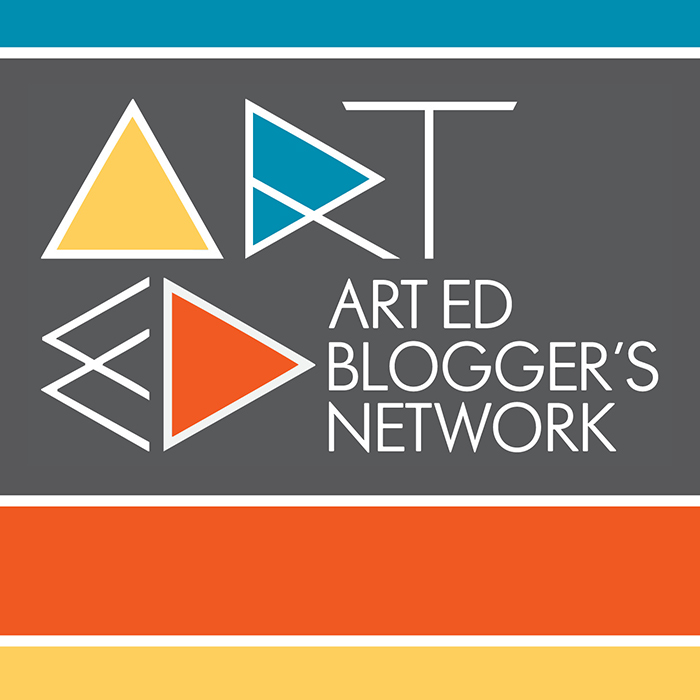By the way, the small amount of added color was done with acrylic paint mixed with Mod Podge, after the black 'antiquing' was done with India ink and steel wool.
I knew I didn't want to simply glue him on the white board as shown above, but I was struggling to figure out what environment would be a good fit for him. So I stuffed all his parts (head, antennas, neck, arms, shoulders, legs, and body - all together 11 pieces) in a baggie that evidently wasn't closed too well. I brought the bag into my studio, where I promptly dropped it, spilling the pieces onto a canvas laying on the floor. The canvas was painted with black gesso, and I had drawn lines on it with white chalk. I saw the robot pieces on the canvas, and an idea was born!!
I found a scrap piece of foam core, and I painted it with black gesso. Then I used a ruler and a white colored pencil to draw a perspective room room. I added a couple of accents of color, also with colored pencil. And then I glued my robot into the room, using low temperature hot glue.
I posted a pic of him on Facebook, and he's received a lot of love, and a lot of questions, so in case you are thinking about this as a possible project for your students, here's a few thoughts on how to make it work -
- Your students should each have a baggie or envelope (with their name on it) to store their pieces. It's up to you how many pieces to make. Arms and legs could be separated to be jointed at the knee or elbows. Elbows, knees, hips, etc, could all be separate pieces like my shoulders are. Make sure all pieces are cut with rounded corners to prevent cuts.
- Because the pieces are small, keep the design of each piece simple.
- If you are using white colored pencil, like me, to do a perspective drawing on a black surface, make sure it is erasable in case of errors. I liked the texture of the gessoed surface, but that might not be practical for young students.
- Of course the drawing doesn't need to be perspective. That might be too challenging for some students. How about a city? A garden? A mountain landscape?
- I glued with low temp hot glue. Keep in mind that it low temp hot glue dries immediately, so if you are using this, the pieces have to be instantly placed once glue is applied. With the small pieces, I suggest holding them with tweezers, quickly applying the glue, and placing them as desired.
- I do NOT recommend high temp hot glue. While it will also hold well, and you have place your pieces, you are gluing METAL, and it will get HOT! Probably not a great idea for your students.
- Other ideas for adhering, if you don't want to use hot glue: E6000 glue should work well, and some tacky glues might also hold. Look for one that specifically says it will hold metal or other non-porous surfaces. While I love Elmer's Glue-All, it is best for porous surfaces, like paper, wood, glue, or fabric. It won't hold the metal foil permanently. You can also use double stick tapes or other double-sided sticky products.
One last thought - the idea of using multiple small pieces of tooling foil to create this robot sparked many other ideas. For example, what about making windows and doors, and adhering them to a drawing of a house. Or perhaps making tooling foil bugs, and adhering them to a drawing of flowers. Or parts of a machine, or wheels of a vehicle, or leaves of a tree, or little boats to put on a drawing of a lake. The material offers so many possibilities, so many ideas! In the photo above, the the face features were made with a much lighter weight foil, not as effective, I think. The students who made them were 3rd graders. Please let me know if you have any questions!!






















































